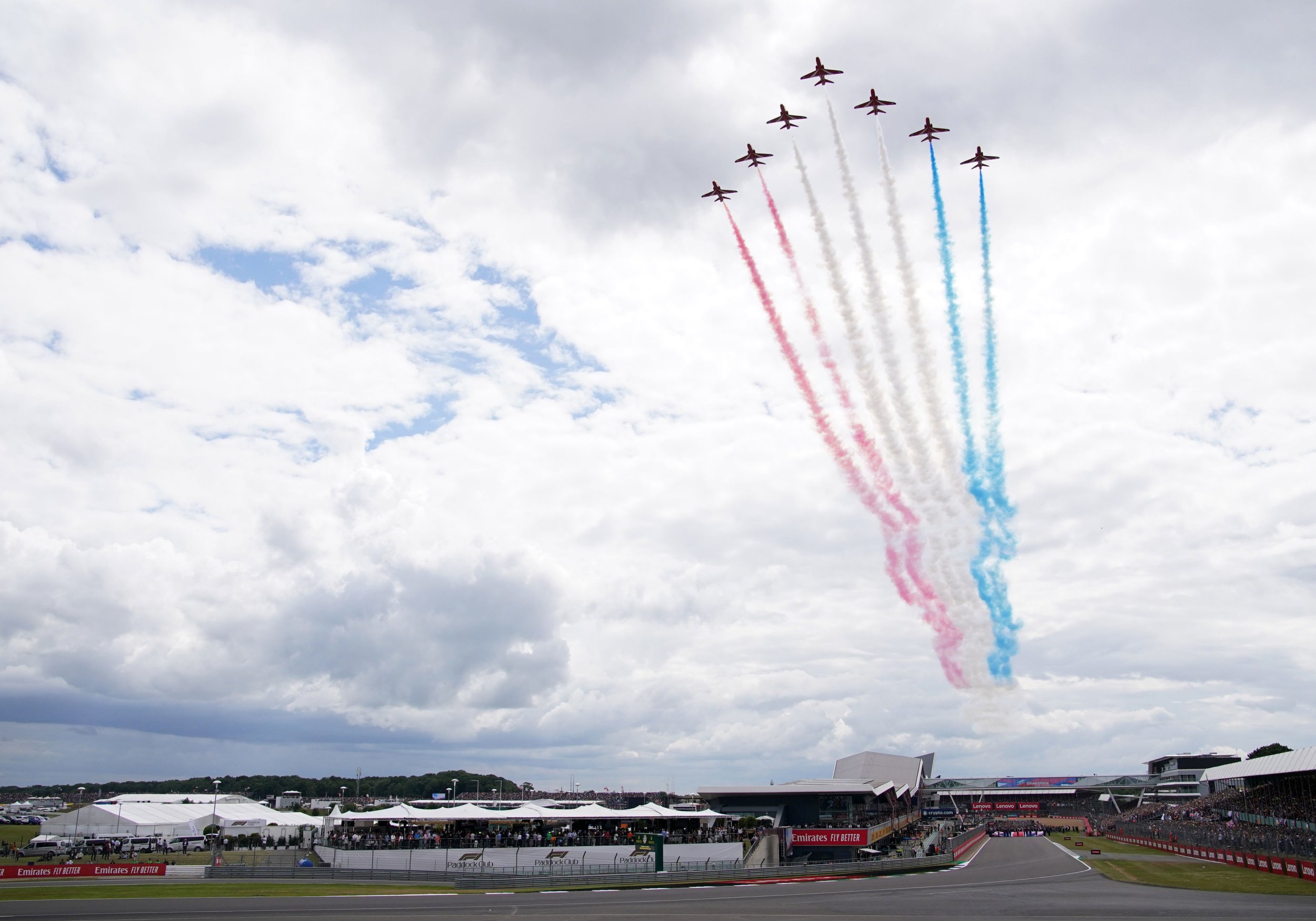
The Farnborough Air Show 2022: Prospects For India?

The Farnborough International Air Show (FIAS)-2022, in vogue since 1948, was held at Farnborough, UK from 18 to 22 July 2022. The five-day event is the world’s largest airshow, hosted in even years, with its ‘twin’, the Paris Airshow a close second, hosted in odd years. Due to the COVID-19 pandemic, FIAS-2022 is the first FIAS since 2018 and the first of the twin airshows since the Paris Airshow-2019. FIAS-2022, importantly, established the global aerospace industry’s reactions to changes in work and manufacturing paradigms brought about by the COVID pandemic and conflict. FIAS-2022 also witnessed Boeing stealing a lion’s share of the orders, striking deals for a total of 237 aircraft with options for 41 additional aircraft.
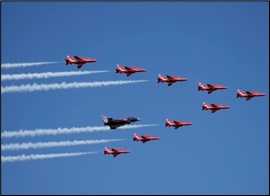
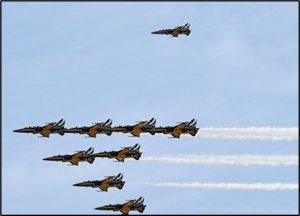
Royal Air Force Red Arrows (L) & South Korean Black Eagles (R) Aerobatic Teams at FIAS-2022: Source-inews.co.uk
FIAS-2022 uniquely focussed on six pivotal aerospace industry themes, including Space, Defence, Sustainability, Innovation, ‘Futureflight’ and Workforce.
The country pavilions showcased ground-breaking technology and capabilities across defence and aerospace domains. A large number of firms participated – Lockheed Martin, General Dynamics, Boeing, Airbus, Embraer, Turkish Aerospace Industries (TAI), BAE Systems, Leonardo, Gulfstream Aerospace, Saab, Pipistrel, Dornier, Safran, Turbomechanica, Rolls-Royce, StandardAero, Sierra Nevada Corporation and GKN Aerospace were some of the prominent names. The airshow also featured a separate Space Zone (for interaction with leading players in the space industry) and an R& D Zone (offering a platform for advanced engineering Universities and Research & Technology organisations to showcase technological advances).
FIAS-2022 also hosted the maiden edition of the Aerospace Global Forum (AGF), with the aim of bringing together governments, climate experts, start-ups and OEMs to energise collaboration in the fields of aerospace manufacture, automation and digitisation and to galvanize global supply-chain management. The forum debated on sustainability solutions, the use of AI, pioneering space exploration, quantum computing systems, electric flight, air traffic management and innovations in the aerospace manufacturing industry.


Static Display at FIAS-2022:Source-aero-mag.com/farnboroughairshow.com
The following aircraft were part of separate static(S) or flying (F) displays:-

Technology Demonstrated at FIAS-2022
While it would not be feasible to cover all the equipment showcased at FIAS-2022, this article will focus on some of the displayed operational military aviation products of interest or which are/ could be of relevance to the Indian Armed Forces or the Indian Defence Industry in the near future. These are enumerated in succeeding paragraphs.
- US F-15E. The F-15E ‘Strike Eagle’ is a US multi-role fighter which is an improvement over the erstwhile F-15 Eagle. The aircraft was originally designed in the 1980s for long-range/high-speed interdiction without relying on escort/Electronic Warfare (EW) aircraft. The aircraft can be visually distinguished from the earlier variant by its darker camouflage, Conformal Fuel Tanks (CFTs- read more @ https://chanakyaforum.com/rafale-or-f-a-18-super-hornet-who-will-board-indias vikrant/ ) and a tandem-seat cockpit. The tactical EW system (TEWS) integrates all electronic countermeasures including radar warning receivers, radar jammer, Active Electronically Scanned Array (AESA) radar and chaff/flare dispensers in order to provide comprehensive defence against detection/tracking. The F-15EX ‘Eagle II’ (not displayed at FIAS-2022) is an improved 4.5 Generation twin-engine version developed by Boeing. It is the most advanced variant of the F-15 aircraft family and is capable of mounting hypersonic weapons. It is also one of the world’s fastest fighter aircraft, with a top speed of Mach 2.5 and a large payload capability of 13.6 tons. The aircraft is equipped with a new EW system and features open-mission systems (OMS) architecture with advanced battle-management systems (ABMS), allowing rapid integration of future aircraft technologies to ensure relevance for a long period. The aircraft comes with fly-by-wire flight controls and the APG-82(V)1 AESA radar for extended range and improved multi-target tracking/precision engagement capabilities. It is capable of operating with an ‘Unmanned Wingman’ (read more about this @ https://chanakyaforum.com/the-unmanned-wingman/). Boeing has confirmed that they would offer the F-15EX at a discounted cost in response to the RFP for a Medium Multi-Role, Combat Aircraft (MMRCA) for the Indian Air Force.
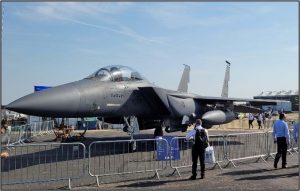
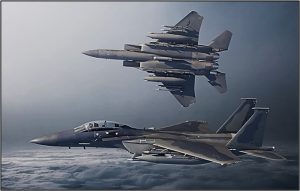
F-15E Strike Eagle on Display at FIAS-2022(L), F-15EX(R):Source-aerotime.aero/boeing.com
- TAI’s Hürjet. The Hürjet is a single-engine, tandem-seat, supersonic advanced trainer and light combat aircraft (LCA) under development, with the first flight scheduled for end-2022. The aircraft will boast capabilities of air-to-air refuelling, fly-by-wire controls, built-in auxiliary power unit, night vision goggle-compatible cockpit, head-up and helmet-mounted displays. The aircraft will mount a single General Electric F404-GE-102 Afterburning Turbofan Engine, capable of producing 76 kN of thrust. It will have a top speed of Mach 1.4, range of approximately 2200 Km, service ceiling of 45,000 feet, rate of climb of 39,000 feet/minute and capability to absorb +8 to -3 G. The Hürjet is also in competition with India’s TEJAS for Malaysia’s contract for 18 LCA.
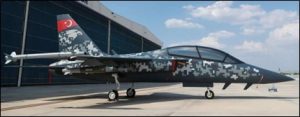
Turkish Hürjet:Source-pentapostagma.gr
- T129 ATAK Attack Helicopter (AH). This is a twin-engine, tandem-seat, multi-role, all-weather AH co-developed by TAI with Augusta Westland, an Anglo-Italian helicopter design & manufacturing company. The US$ 50 Million AH has Turkish avionics, airframe upgrades and weapon systems integrated onto an upgraded Augusta A129 Mangusta AH aluminium alloy airframe, with improved engines, transmission and five-blade rotors. The ATAK’s engines are equipped with the Full Authority Digital Engine Control (FADEC) – an electronic system that controls all aspects of engine performance, resulting in higher efficiency and lower failure rate. The ATAK has a top speed of 281 Kmph and a combat range of 537 Km, with a 3-hour endurance and a service ceiling of 15000 feet and is designed to operate in hot regions. It mounts the Turkish Aselsan ASELFLIR-300T Forward Looking IR (FLIR) system, which allows the AH to carry out an IR scan of the ground without the need of a physically moving IR sensor. The digital cockpit also mounts the Aircraft and Mission Management System. The AH mounts a 20mm US M 197 three-barrel rotary cannon with 500 rounds. It has four hardpoints to carry a 1200 Kg weapon payload including 76 unguided rockets or 8 x 160mm Turkish UMTAS ATGMs/ 16 x 70mm Turkish Cirit ATGMs/ 8 x US Air-to-Air-Stinger (ATAS) short-range missiles. The AH is equipped with a countermeasure dispensing system (CMDS), missile warning system, laser warning system, radio frequency jammer, radar warning receiver and IR countermeasures. Purely from the cost point of view, the ATAK, at approximately US$40 Million per piece, is significantly cheaper than the Apache AH64, the latter being priced at approximately US$ 85-100 Million apiece.
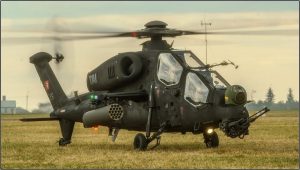
The Turkish ATAK AH:Source-YouTube.com
- AW 159 Multi-Role Helicopter (MRH). The Augusta Westland AW159 ‘Wildcat’ is a British MRH for utility, search & rescue (SR) and anti-surface warfare (ASW) roles. The MRH has a crew of two pilots and a capacity for six passengers, including a door gunner. The MRH is powered by two US LHTEC CTS800-4N Turboshaft Engines, has a max take-off weight of 6000 Kg and a total payload weight of 2700 Kg. It has a max speed of 311 Kmph with a combat range of 777 Km. The MRH has an endurance of 2 hours 15 minutes, which doubles with auxiliary fuel tanks. The armament includes Belgian FN MAG 7.62mm General Purpose Machine Gun (Army version) or the US M3M Browning 0.50 calibre Machine Gun ( Naval version). The Naval version can also mount upto 20 x Thales Martlet Lightweight Multi-Role Missiles, 4 x MBDA Sea Venom anti-ship missiles, the UK Stingray Acoustic Homing lightweight torpedo and depth charges. The AH-1 (Army) variant boasts of battlefield reconnaissance and assault as primary roles while the HMA-2 (Navy) variant is defined for anti-surface/anti-submarine warfare, utility and SR. The Naval variant has a Seaspray 7000E AESA radar, a nose-mounted electro-optical / IR sensor for day/ night imaging and target designation and an active dipping sonar. Both variants have a common airframe which has been marinised with a greater airframe lifespan for maritime operations. The Bangladesh Navy flies an earlier variant of the helicopter. The MRH comes priced at approximately US$27 Million apiece.
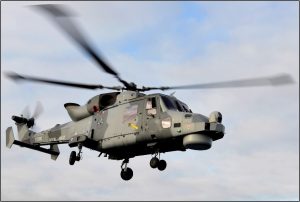
AW 159 Naval Version:Source-Wikipedia
- CGT50-VTOL Unmanned Aerial Vehicle (UAV). The CGT50 Vertical Take-Off and Landing (VTOL) UAV is manufactured by Ireland’s A-techSyn Enterprise. The UAV has a wingspan of 4.71 m and uses electric-powered motors for take-off and landing. Being a VTOL craft, it does not require a runway or catapult facilities for take-off and landing and can be operated by a two-person crew, thus lending it great flexibility and mission capability in the field (as per the OEM, the UAV can take off from a table and land on 5m x 5m surface!). The UAV possesses a composite airframe which accords it a reduced signature. It has a max take-off weight of 55 Kg and a payload capacity of 5 Kg. The UAV has a cruise speed of 89 Kmph and a command/control range upto 200 Km. Using a 350-Watt generator, the engine produces sufficient energy for operating the UAV and allows a backup of 200W to be used for payloads and extra equipment on-board. The UAV has hybrid power in the form of a backup battery which can power the system for 45 minutes, enabling it to return and land safely in case of generator or engine failure. Its 18-litre fuel capacity and low fuel consumption allows it an endurance of 6 hours. The UAV uses A-techSYN’s Avionics Mini Flight Control System to carry out fully autonomous missions. It also uses encrypted communications and is SATCOM capable, thus enabling long-range handling and operation. VTOL UAVs or UCAVs(Combat-Armed UAVs) that can operate along the Line of Control with Pakistan and in restricted terrain along the Line of Actual Control with China would provide a significant advantage to the Indian Armed Forces to prosecute operations far forward of existing UAV/UCAV bases/ airfields and therefore would maximise the operational reach of such machines.

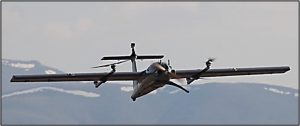
CGT50-VTOL UAV:Source-a-techsyn.com
- TAI’s Anka and Aksungur UAVs. The Anka is a class of surveillance, reconnaissance (SR) and strike UAVs developed by TAI for the Turkish Air Force. The UAV sports a modular design. It can also fire precision-guided munitions and is equipped with SATCOM. The basic version, Anka-A, is a Medium-Altitude Long-Endurance (MALE) UAV, designed for reconnaissance missions. The Anka has five variants including the Anka+A (designed as a High Altitude Long Endurance [HALE] ‘Hunter-Killer’ UCAV); the Anka B (improved SR version of the Block A, with a greater payload capacity, including a synthetic aperture radar (SAR)/ Ground Moving Target Indicator (GMTI), EO/IR sensors or FLIR, laser range finders/target designators); the Anka-S (serial production UCAV version of the Anka, equipped with SATCOM, which enables beyond line-of-sight operations. The version has an endurance of greater than 24 hours and is also capable of carrying out ‘satellite controlled’ airstrikes, as claimed by the vendor); the Anka-I ( EW and Intelligence variant equipped with EW, ELINT and COMINT sensors, developed for Turkey’s National Intelligence Organisation) and the Anka-2 or Aksungur (a twin-engine, improved variant of the Anka-S). The Anka is an example in redundancy, with double onboard computers, overlapping flight control sensors and actuators, a fully automatic take-off/landing system, overlapping positioning systems including the Radar Tracking System and DGPS and a redundant power back-up in the form of alternator and batteries. The present production models have an endurance of more than 30 hours, service ceiling of 30,000 feet, datalink range greater than 250 Km and a max take-off weight of 1700 Kg, which includes a 350 Kg payload. The Anka costs approximately US$ 27 Million apiece (would vary depending on configuration). The Anka-S UCAV was used repeatedly in strikes against the Armenian forces in the 2020 Nagorno-Karabakh conflict!

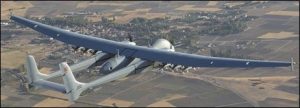
Anka UCAV (Top), Aksungur (Bottom):Source-tusas.com/naval-technology.com
Conclusion
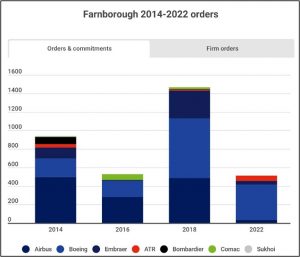
FIAS Over the Last Decade:Source-aerotime.aero
FIAS-2022 remained true to its reputation as the world’s signature airshow, with a plethora of equipment taking part in the static display and a significant flying display component. However, fructification of deals during FIAS-2022 seems to have taken a blow due to the remnant effects of COVID-19 and the Russo-Ukraine War, a situation that hopefully will see alleviation in further airshows.
Disclaimer
The opinions expressed in this article are the author’s own and do not reflect the views of Chanakya Forum. All information provided in this article including timeliness, completeness, accuracy, suitability or validity of information referenced therein, is the sole responsibility of the author. www.chanakyaforum.com does not assume any responsibility for the same.
Chanakya Forum is now on . Click here to join our channel (@ChanakyaForum) and stay updated with the latest headlines and articles.
Important
We work round the clock to bring you the finest articles and updates from around the world. There is a team that works tirelessly to ensure that you have a seamless reading experience. But all this costs money. Please support us so that we keep doing what we do best. Happy Reading
Support Us





















POST COMMENTS (0)